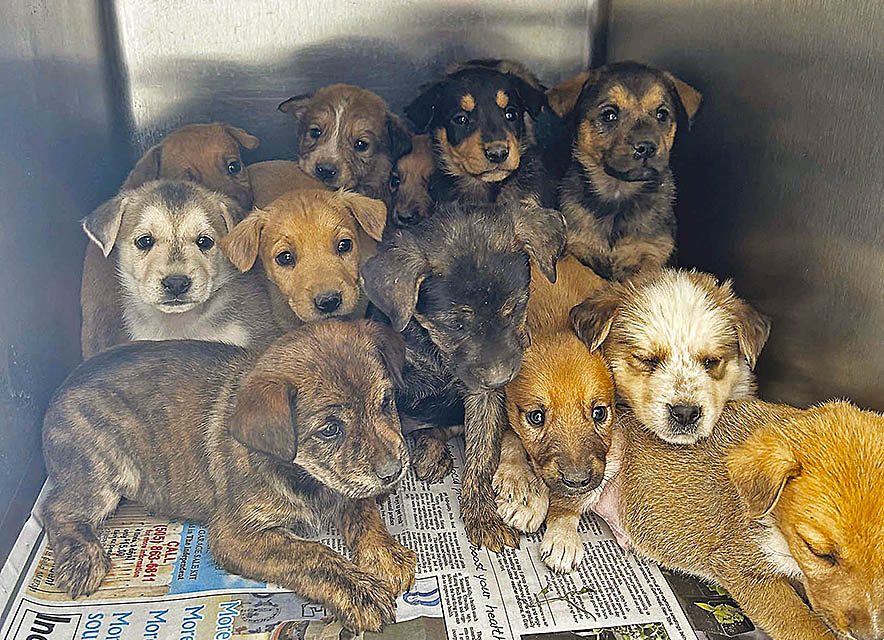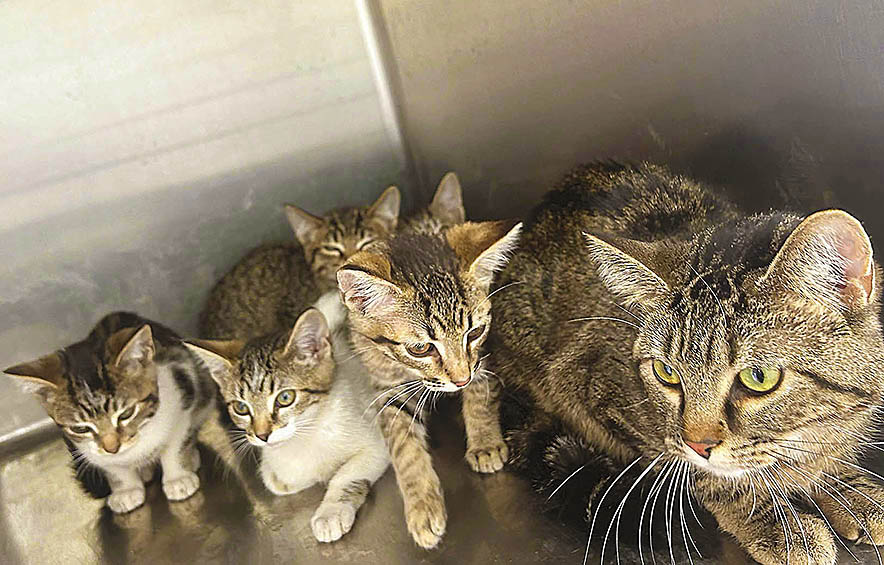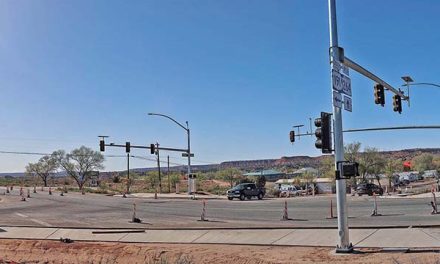
Navajo Nation animal shelters surging with unwanted dogs, cats: Part I

Courtesy | Jennifer Johnson
A litter of puppies was either dropped off by their owner or stranger or picked up by Fort Defiance Animal Control. These pups and many others are housed at Fort Defiance Animal Shelter in Fort Defiance, Ariz.
WINDOW ROCK – Throughout the Navajo Nation, the influx of animals is growing in numbers, causing concern for animal shelters and public safety.
“Animals owned or strays, (the numbers) have skyrocketed. It’s really bad,” said Jennifer Johnson, a kennel officer at Fort Defiance Animal Shelter, who previously worked as a Veterinary Tech at Gallup Humane Society.
On a daily, Johnson said the shelter has animals coming in. The Fort Defiance Animal Shelter is closed because of plumbing issues and isn’t accepting animals. Still, its staff advises people to take the animal(s) to another animal shelter.
Other Navajo Nation Animal Control Programs include Many Farms, Shiprock, Tuba City, and Crownpoint.
“We stress that the officers at Many Farms are taking in more,” Johnson said. “I know they are stressed out of taking over our animals.” She commends their effort in allowing this.
With the influx of animals being taken to animal shelters, spaying/neutering plays a vital role in ensuring not only the decrease of unwanted litter but also the public’s safety.

Courtesy | Jennifer Johnson
A cat and her kittens are housed at Fort Defiance Animal Shelter in Fort Defiance, Ariz.
“There’s a ton of different benefits to spay and neuter,” said Michelle Weaver, the director of sanctuary outreach for Best Friends Animal Society. She believes it can impact public safety regarding fewer dog bite cases or livestock damages.
“Because we see a higher rate of male dogs or nursing female (dogs), they tend to have a higher rate of bite incidents for many reasons,” she added.
In many cases, public safety is the main priority to avoid the heartbreaking story of what happened to 13-year-old Lyssa Rose Upshaw, who was killed by a pack of dogs in Fort Defiance in 2021.
According to a previous Navajo Times article published May 18, 2021, Upshaw was walking on a nearby jogging trail when her mother noticed her daughter had not returned at a particular time.
The family began to search for her when a relative said one resident had a bunch of dogs that were known to be aggressive and had bitten people before. Once the family arrived near the residence home, they found Upshaw curled up in a fetal position and her legs “chewed up.”
According to the story, 12 dogs were found on the resident’s property. The family believes there may have been more.
According to Johnson, the Fort Defiance Animal Shelter received a call last week that dogs were attacking kids walking home from school. The shelter staff constantly asks dog owners to tie up their dogs. But those owners often say it isn’t theirs.
“We try our best to do what we can,” Johnson said. When the animal shelter receives calls regarding any concerns or complaints of animals, depending on the severity, that person is put on a waitlist.
“Bite cases and livestock damages are a priority and are answered right away,” she said. “If it’s a call near one of the officers, they will respond right away.”
Recently, a Diné language and cultural teacher, Albert Chase’s sheep, were attacked and killed by five pit bulls on Jan. 27 in Joseph City, Arizona.
Given the circumstances and the severity of the case, Chase couldn’t share further information.
Working with rescuers
Although many cases are unknown, pet owners should spay/neuter their animals to reduce the risk of liability and maintain unwanted pets.
Throughout the Nation, strays are seen in parking lots such as Bashas’ in Window Rock or Lowe’s Market parking lot in Burnside, Arizona.
According to Johnson, strays are a hassle to capture because of their sense of smell. Rescuers who try to capture these strays – by feeding them – are more cautious when animal control officers try to obtain them. They become protective and aggressive, said Johnson. A few of the officers have been bitten or snapped at. But the benefit of working with rescuers is finding homes for strays brought into animal shelters.
“Working with the rescues, what we are aiming for, like a dog bite or livestock damage, we (recommend) that (an) animal is spayed/neutered before it’s released,” Johnson said.
A few rescued partners are nonprofits like Best Friends Animal Society in Kanab, Utah, RezRoads Rescue in Shiprock, and Animal Rez-Q, a mobile clinic covering areas across the Navajo Nation.
According to Johnson, stray dogs and cats are never-ending. Recently, animal control officers received a call in Vanderwagen, New Mexico, when dogs attacked a cat and “was barely alive,” according to the caller.
The cat suffered from punctured wounds, torn skin, and a swollen eye.
“Spay and neutering can help with pets wandering,” Michelle Weaver said. “That drive for males to go find a female in heat, tends to have (males) go further and more likely to fight with other male dogs,” she added.
Weaver said spaying and neutering reduce many concerns. She recommends that many pet owners spay/neuter their animals to reduce their risk of various diseases, viruses, attacking people or other animals, biting, wandering, and litters.
Animal control in the Navajo Nation is a three-part series. Read parts II and III in the Feb. 15, 2024, edition of the Navajo Times.










 Highway 264,
Highway 264, I-40, WB @ Winslow
I-40, WB @ Winslow